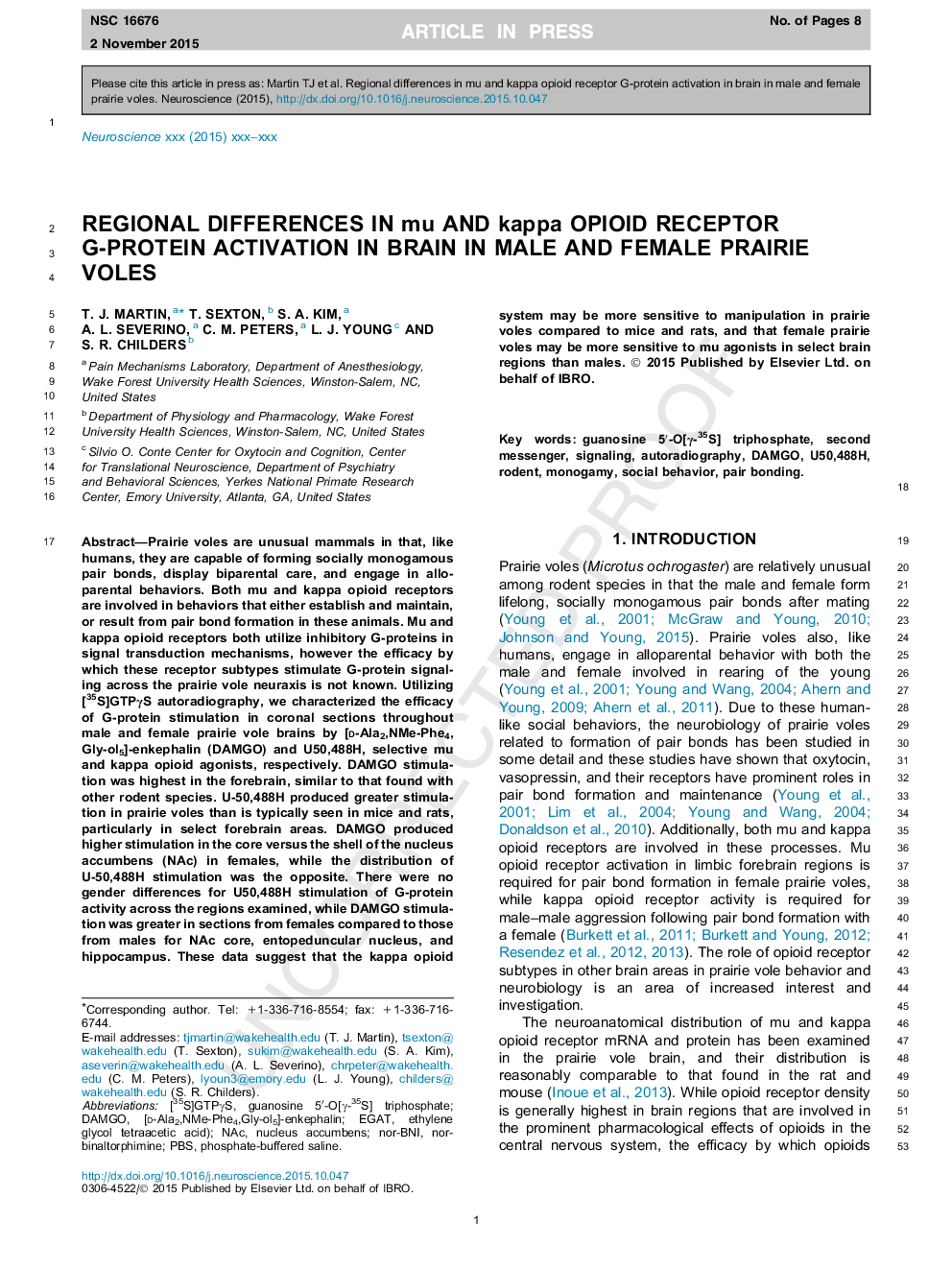| Article ID | Journal | Published Year | Pages | File Type |
|---|---|---|---|---|
| 6271658 | Neuroscience | 2015 | 8 Pages |
Abstract
Prairie voles are unusual mammals in that, like humans, they are capable of forming socially monogamous pair bonds, display biparental care, and engage in alloparental behaviors. Both mu and kappa opioid receptors are involved in behaviors that either establish and maintain, or result from pair bond formation in these animals. Mu and kappa opioid receptors both utilize inhibitory G-proteins in signal transduction mechanisms, however the efficacy by which these receptor subtypes stimulate G-protein signaling across the prairie vole neuraxis is not known. Utilizing [35S]GTPγS autoradiography, we characterized the efficacy of G-protein stimulation in coronal sections throughout male and female prairie vole brains by [d-Ala2,NMe-Phe4,Gly-ol5]-enkephalin (DAMGO) and U50,488H, selective mu and kappa opioid agonists, respectively. DAMGO stimulation was highest in the forebrain, similar to that found with other rodent species. U-50,488H produced greater stimulation in prairie voles than is typically seen in mice and rats, particularly in select forebrain areas. DAMGO produced higher stimulation in the core versus the shell of the nucleus accumbens (NAc) in females, while the distribution of U-50,488H stimulation was the opposite. There were no gender differences for U50,488H stimulation of G-protein activity across the regions examined, while DAMGO stimulation was greater in sections from females compared to those from males for NAc core, entopeduncular nucleus, and hippocampus. These data suggest that the kappa opioid system may be more sensitive to manipulation in prairie voles compared to mice and rats, and that female prairie voles may be more sensitive to mu agonists in select brain regions than males.
Keywords
Related Topics
Life Sciences
Neuroscience
Neuroscience (General)
Authors
T.J. Martin, T. Sexton, S.A. Kim, A.L. Severino, C.M. Peters, L.J. Young, S.R. Childers,
